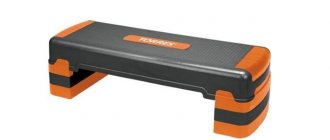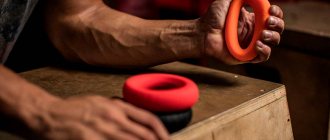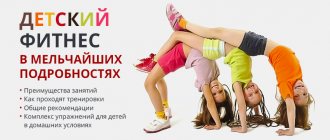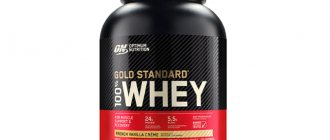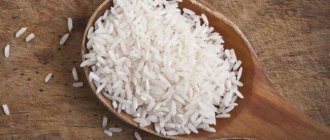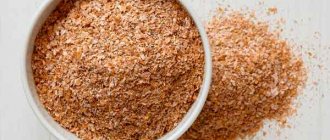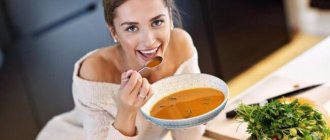© macor — depositphotos.com
Share:
When studying the topic of rehabilitation procedures, we must not forget that most sports injuries occur due to poor development of the muscles themselves. Warming up partially solves this problem. But sports massage is considered the best way to combat injuries. What is it and how to do it correctly?
General information
Sports massage is a complex of mechanical effects on the nerve centers, muscles, ligaments and tendons of the athlete.
Positive effects of massage:
- Reduces the risk of injury when performing basic exercises.
- Stimulates blood flow, reduces the load on the cardiovascular system.
- Improves athletic performance in the short term.
- Reduces the effect of lactic acid on the body.
- Increases pumping in muscle tissue.
What is the difference between sports massage and classical massage? The differences are not so significant. If we consider both massages as types of mechanical influence, sports massage is almost no different from classical massage. However, the involved nerve nodes and deeper development of muscle groups make sports massage more effective.
© Ischukigor — depositphotos.com
What diseases can be cured by massage?
First of all, people with pathologies of the musculoskeletal system need massage. In this case, timely contact with specialists can not only prevent the development of complications, but also stop the development of the pathological process in combination with other types of therapy. These include radiculitis, osteochondrosis, herniated intervertebral discs, poor posture, injuries, neuralgia, and neuritis.
Special medical massage techniques make a huge contribution to the treatment of children with cerebral palsy. Also, with the development of chorea against the background of acute rheumatic fever, obsessive movements syndrome, hyperactivity, a combination of various massage techniques helps to improve both the patient’s condition and social adaptation.
For patients with psychosomatic pathologies, therapeutic and classical types of massage help them recover faster, learn to relax, and control their condition.
Rehabilitation programs for people after strokes, acute coronary syndrome, severe long-term illnesses are the right solution for improving the general condition of the body, the functioning of the cardiovascular and nervous systems, recovery, improving motor functions, body endurance and adaptation to physical activity.
Massage is also relevant for those who have been on diets for a long time. Most often, when losing weight, especially without physical exercise, muscle mass “does not have time” to adapt to the changes occurring in the body. As a result, muscle weakening leads to prolapse of internal organs and, accordingly, their dysfunction.
In general, most diseases require physiotherapeutic treatment in the form of massage. The main thing in such cases is to exclude contraindications to manipulation and find a good specialist.
Historical reference
To understand how the concept of sports massage arose, you need to delve a little into history. The roots of this sporting event go back to the time of the first Olympic Games. The Greeks attached great importance to warming up. It was believed that oil and warm-up improved muscle function. And this was true.
Interesting fact: the Olympic Games in Greece and the training technique of weightlifters at that time were radically different from modern fitness theory. However, if you look at the general principles of the approach to the training itself, the Greeks trained similar to modern CrossFit athletes. The training program included two workouts per day. This did not provide complete recovery, but it better prepared me for competitions.
After the disappearance of the Ancient Roman Empire, the theory and practice of sports massage were forgotten. Massage was used as preliminary training for the military in Byzantium, but that massage had a slightly different technique and purpose.
Sports massage techniques were again remembered closer to the beginning of the 20th century. Then the science of physiology, in particular its sports branch, gained its greatest flourishing. It has been proven that the correct mechanical impact on certain muscle groups and nerve nodes increases the endurance, strength and speed of athletes.
Interesting fact: the pioneer of modern sports massage is considered to be Professor Zabludovsky, a famous medical scientist who specialized in ways to increase the efficiency of the human body. A note about his achievements was published in the magazine "Sport", sponsored by the Imperial Romanov family.
Developments in the field of modern sports massage gave birth to a new profession - massage therapists who specialized in the treatment of sports injuries, and manual massage therapists, who used similar basic principles to treat sports injuries, including spinal injuries.
The greatest advance in the study of mechanical effects on the athlete’s body occurred during the Soviet Union. Back in 1924, a decision was made on the centralized development of sports in a socialist country and resources and specialists were allocated to study this topic. However, between 1930 and the present, there were no qualitative innovations in the technique of sports massage.
Types of sports massage
Sports massage is a set of measures that combines some types of classical wellness procedures. Let's take a closer look at the types of sports massage and its effect on the body.
| Type of massage | Impact principle | Effect on the body |
| Training massage | Mechanical effect on the muscles that are at work. Rubbing movements are a priority. | The main goal of such a massage is to remove the pumping effect and disperse lactic acid, increasing the athlete’s endurance, allowing him to produce peak strength in the last approaches. |
| Pre-workout massage | Mechanical effect on muscle groups that will work in the upcoming workout. Additional effect on the spinal muscles. | The main task is to stretch and warm up muscle groups, which will reduce the time for warming up and reduce the trauma of crossfit exercises performed. |
| Warm-up massage | Light massage of all muscle groups before training. | It is considered an additional warm-up, thanks to the mechanical effect it allows you to tone your muscles even before starting a workout. |
| Pre-race massage | Serious mechanical impact on the main muscle groups and nerve centers associated with working muscle groups. | The main goal of this massage is to engage deep muscle groups, disperse the blood, which leads to improved performance in competitions. |
| Warming | Rubbing effect on working muscle groups. | Used for working in cold conditions to reduce the trauma of exercise. Back massage plays an important role. |
| Recovery (after training) | Mechanical palpating effect on used muscle groups. | Reduces the pain factor after training. |
Indications: who may benefit and need it?
Make an appointment Poletaev Mikhail Sergeevich Massage therapist 12 years of experience.
Proficient in methods of therapeutic, preventive, relaxing massage. Provides treatment for diseases and symptoms such as back pain, muscle hypertonicity, poor posture, scoliosis, etc. Consultation from RUB 2,500. Sports massage is the same prerequisite for the training process in large physical education organizations as the development of a special diet for athletes, adherence to a work and rest schedule, etc. Many teams accompany many teams at competitions.
Conducting massage sessions, the purpose of which may be to maintain good physical shape or treat diseases (sprains, injuries, hematomas), may be required not only by professional athletes. Today, visiting a gym or fitness center is more important than ever. People who play sports at an amateur level can and should also use the services of a massage therapist.
Training massage
What is a training massage? This is the most ordinary tonic massage. Its task in any of the types (warm-up, pre-start, warming, recovery) is to tone muscle tissue. The procedure reduces the risk of injury and improves results.
Warm-up
It is advisable to apply a preliminary sports massage before each workout. Moreover, you can do it yourself. The simplest version is warm-up self-massage. To stretch your legs, you just need to rub the calf muscle with slight pressure until you feel a slight warming sensation. The same goes for other muscle groups. Of course, this will not be a full-fledged massage, but it will perfectly warm up the muscles, just like the warm-up itself before training.
During the warm-up massage, you stimulate blood supply to the affected areas, which leads to:
- to reduce the pumping effect, since the blood flow speed will be much higher;
- better muscle contraction;
- stretching and compression of major muscle groups.
© Lashkhidzetim — depositphotos.com. Warm-up massage can be performed with a percussion massager
Pre-launch
Pre-race massage, unlike warm-up massage, is performed exclusively by specialists. The principle of the effect on the body is approximately the same, but the main task - to speed up blood flow and tone the muscles - is performed somewhat differently.
Pre-race massage is a great way to improve your results where you need peak speed of exercise:
- Running and other aerobic movements.
- Explosive complexes.
- Work in a lifter style with power approaches.
© giorgiorossi73 — depositphotos.com. Pre-race massage
Warming
A warming massage is almost completely identical to a warm-up massage. The only difference is the priority of the tasks. With a warming massage, it is important to ensure that the blood flow in the muscle tissue accelerates to the limit; the tone of the muscle tissue itself does not play a big role. That is why special warming ointments are used in warming massage.
Warming massage procedures are often used for microdislocations of the lumbar region or for pinched nerves. It is also perfect in cases where you train in a cold gym in winter, as it reduces the influence of cold on your results.
SELF-MASSAGE
Athletes often resort to self-massage. Its advantages are that it can be used under any conditions and in any position. It has a number of advantages, including simplicity and accessibility of techniques.
For athletes, self-massage allows them to conduct more intense workouts, briefly relieve tension, and reduce fatigue.
But this type of massage has disadvantages and contraindications. Self-massage should not be used for:
- diseases of the heart and stomach
- feverish conditions
- it is undesirable to conduct it in places where there are a lot of moles
- presence of ulcers
- skin diseases.
Self-massage involves a significant expenditure of muscle energy, which affects the functioning of the heart. It cannot be done independently in some areas of the body, for example, the interscapularis, which reduces its effectiveness.
It is recommended to do self-massage at least 60 minutes before meals and no earlier than 2 hours after meals. Remember that the massage should be strong, but not painful.
SELF-MASSAGE COMPLEX TO INCREASE TONE
- Rub your palms together until a thermal cushion forms between them. Then use your fingers to tap the inside of your arm. Move from palm to elbow. Alternate your hands.
- Do the same action from the elbow towards the collarbone.
- Raise and lower your shoulders 2-3 times. Using massaging movements, move along the collar area towards the back of the head.
- Then, in the same area, use tapping movements, slowly turning into rubbing movements.
- Cover your ears with your palms and release quickly. Pinching vigorously, move from the earlobes upward.
- Relax, take a lying position.
- Massage your stomach in a circular motion for 2-3 minutes.
Restorative
Restorative sports massage is the most pleasant procedure that reduces recovery time between workouts.
How does this happen:
- Under the influence of massage, the body begins to disperse blood in damaged areas. This reduces the effect of microbleeds that occur when muscles are microteared.
- Massage perfectly removes lactic acid from muscle tissue.
- With proper massage, muscle tissue receives more blood, which means more oxygen and nutrients.
- Restorative massage relieves residual tension, which significantly speeds up recovery processes.
© microgen — depositphotos.com. Restorative massage
Massage for injuries
Sports rehabilitation massage stands apart. Its main task is to speed up recovery and reduce pain.
Effects of rehabilitation massage after injuries:
- Improving blood circulation after traumatic exposure.
- Stimulation of the contractility of muscle tissue, which allows localization of catabolic processes due to lack of stress.
- By improving blood circulation, damaged areas receive more nutrients, which speeds up recovery.
- Mechanical action prevents blood stagnation, which reduces painful factors associated with bruises and internal hemorrhages.
- Accelerated regeneration of bone tissue occurs.
How to properly do sports massage for rehabilitation? It is done according to the same principles as a warming one, however, it must be taken into account that the intensity of pressure during palpation should be much less than with a regular warming massage. A milder effect is necessary so as not to worsen the patient’s condition.
© Wavebreakmedia - depositphotos.com. Rehabilitation massage
Basic rules of sports massage
The technique of sports massage, despite its apparent complexity, is quite simple. You just need to follow some rules.
- The massage therapist's movements should be carried out in the direction of the main lymph nodes. This stimulates the nerve centers and increases the overall strength endurance of the body. Doing the opposite can lead to infection.
- The palpating effect should be moderately strong, but the athlete should not experience pain. An exception is cases when an athlete feels pain not because of the massage itself, but because of accompanying destructive factors, for example, micro-tears in the muscles or a huge amount of lactic acid in the body.
- The athlete should be in the most relaxed position during the massage. Only in this way will the nerve nodes be worked out with sufficient depth.
Recovery tools you can use at home if you don't have a massage therapist
Runners often experience discomfort in their calves, hips and knees. If necessary, you can use self-massage techniques as a warm-up, cool-down or recovery procedure. For this, both conventional plucking, percussion, stroking exercises, and various massagers are suitable.
Self-massage can be done immediately after running. Being in a comfortable position, start doing self-massage from the thigh - stroking, squeezing, rubbing, kneading 2-7 times. Next, move to the back of the thigh, massage it according to the same pattern. Rubbing and circular stroking are suitable for knees. Next, move on to the calf and tibialis muscles, and then to the ankle joint, for which the most suitable movement is rubbing.
Among massagers, the most convenient is considered to be a roll, which, when rolled out, helps restore muscles. If pain is present, then it is important to pay special attention to these areas. For example, if your knees hurt, roll the roll along the tendon and the pain will decrease.

